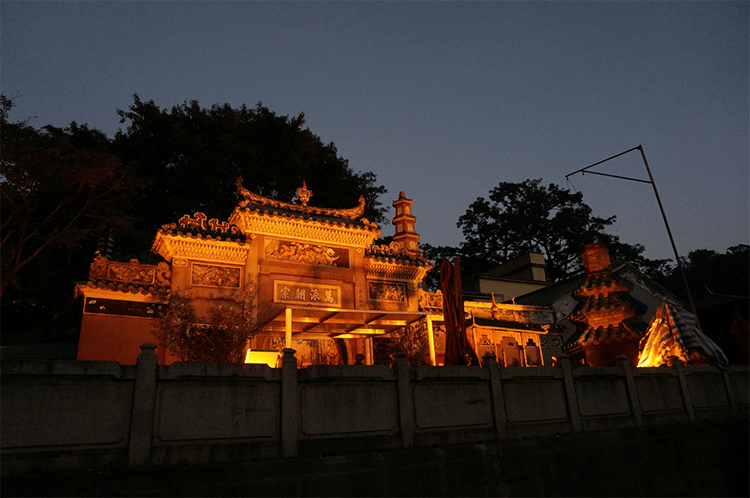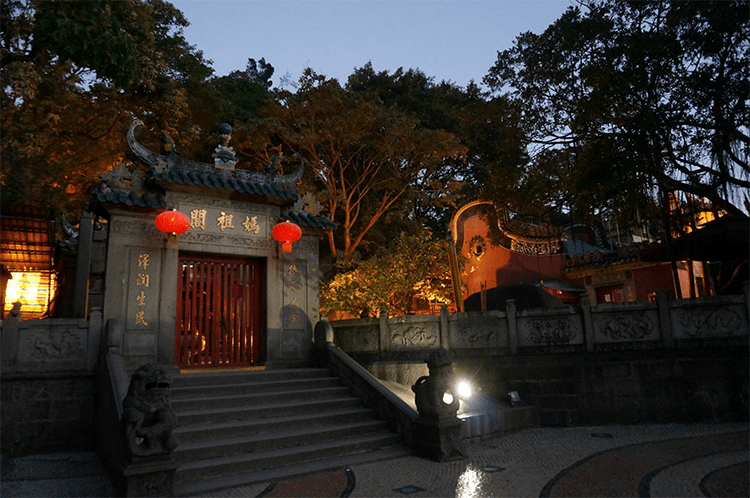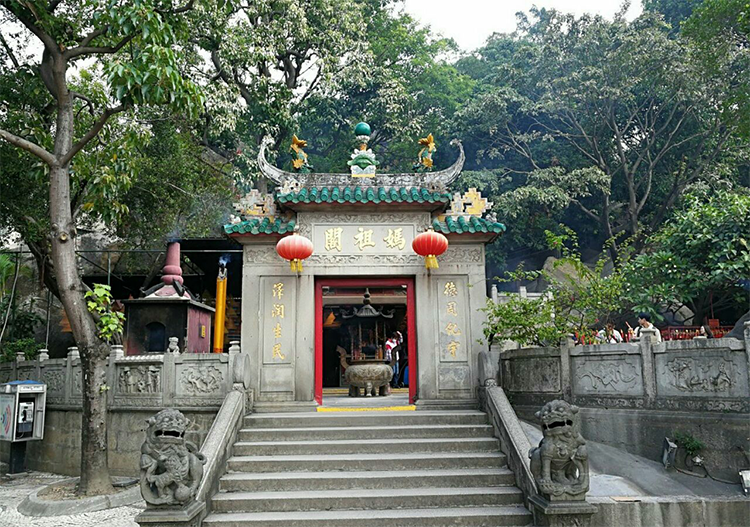Discover Mazu at A-Ma Temple, Macau: History & Visitor Tips
A-Ma Temple Macau: Mazu Heritage
Introduction: A Faith Beacon Between Hill and Sea
At the southwestern tip of the Macau Peninsula, a red-walled, green-tiled temple stands quietly by the sea, witnessing more than 500 years of change — this is A-Ma Temple, Macau’s oldest shrine and a central site of Mazu (the sea goddess) worship.
Stroll through the compound and you’ll feel pronounced Minnan and Lingnan architectural influences, incense curling through the air, and stone inscriptions that tell of Macau’s pivotal role on the Maritime Silk Road. Whether you are a devout pilgrim or a cultural explorer, A-Ma Temple offers a spiritual journey through time.
1. The Soul of A-Ma Temple: A Millennium of Maritime Protection
“One temple, half Macau’s story.”
Built in 1488 (the first year of Ming Hongzhi), A-Ma Temple predates Macau’s formal port settlement and served as a vital place of worship for local fishermen and merchant sailors. The temple honors Mazu (also called the Empress of Heaven), the most revered sea deity along southeast China’s coast, believed to protect seafarers on their voyages.
Distinctive status:
– Macau’s oldest temple; part of the “Historic Centre of Macau” World Heritage listing in 2005.
– A key carrier of Mazu culture, illustrating how maritime beliefs fused with Macau’s multicultural identity.
– The temple preserves many Ming and Qing stone inscriptions; the famous “foreign ship stone” depicts ancient merchant vessels and confirms Macau’s role as a Maritime Silk Road trading hub.
2. Historical Evolution: From Fishermen’s Shrine to World Heritage
A-Ma Temple’s history is tightly linked with Macau’s development:
– 1488: Funded by Fujian merchants and established as a place for fishermen and sailors to pray for safety.
– 16th century: Portuguese sailors misheard “A-Ma-Gao” (A-Ma temple) and named the area “Macau,” giving the city its Western name.
– Ming and Qing eras: The temple grew in prominence; merchants and officials inscribed many steles, creating a rich collection of stone carvings.
– 2005: Included as part of the World Heritage “Historic Centre of Macau,” becoming a symbol of the city’s cultural identity.

3. Architecture and Art: A Blend of Lingnan Style and Minnan Craftsmanship
The temple complex climbs the slope and consists of the Main Hall, Stone Hall, Hongren Hall, and the Guanyin Pavilion, arranged harmoniously with distinctive styles.
(1) Architectural character: red walls, green tiles, sea and hill in harmony
– Lingnan features: upturned eaves, carved beams, and colorful painted woodwork.
– Minnan elements: granite archways and stone carvings that echo both the ruggedness and finesse of maritime culture.
– The entrance arch reads “A-Ma Pavilion,” a classic Ming-Qing stone structure.
(2) Core halls and religious art
– Main Hall: houses the solemn gilded image of Mazu; incense is continually burning.
– Hongren Hall: small and finely decorated, with murals that depict Mazu’s legends.
– Guanyin Pavilion: dedicated to Guanyin Bodhisattva, showing the blend of Buddhist and folk beliefs.
– Stone carving art: the courtyard preserves many Ming and Qing steles; the “foreign ship stone” is historically significant.
4. Religious Activities and Immersive Experiences
(1) Daily rituals
– Visitors can light incense, make prayers, and offer lamps; incense and candles are available by donation.
– Daily sutra recitations take place; visitors may observe quietly to appreciate the devotional atmosphere.
(2) Mazu’s birthday celebrations (lunar March 23)
– The festival features parades, lion dances, and traditional opera, with the whole city celebrating.
– This is the most vibrant time to visit, but it attracts large crowds — arrive early for the best experience.

5. Environment and Atmosphere: A Tranquil Sanctuary Between Sea and Hill
– Typical visitors: local worshippers, cultural tourists, and photography enthusiasts.
– Atmosphere: calm and reverent on regular days; lively and festive during celebrations.
– Natural setting: facing the sea and surrounded by trees, the temple offers beautiful light at dawn and dusk — ideal for photography.
6. Suggested Itinerary
– Recommended stay: 1–2 hours (longer if you study the stone inscriptions and architecture in detail).
– Ideal for: cultural discovery, photography, quiet reflection.
– Nearby combination tour:
– Morning: A-Ma Temple → Macau Maritime Museum (5-minute walk).
– Afternoon: Mandarin’s House (historic residence) → Senado Square for Portuguese-style streets.

7. Practical Tips (Respect and Convenience)
– Dress code: avoid shorts and sleeveless tops to show respect.
– Behavior guidelines:
– Photography is allowed but please avoid flash.
– Keep quiet and do not touch statues or stone inscriptions.
– Opening hours: 07:00–18:00 (free entry).
– Getting there:
– Bus: routes 1, 2, 5, 6B, 10 to the “A-Ma Temple” stop.
– Taxi/ride-hailing: set destination to “A-Ma Temple”; drop-off available at the entrance.
– Payments: donations for incense can be cash or QR code; some vendors accept cash only.
8. Local Insights: Best Times and What to Avoid
– Best times: early morning or late afternoon for fewer crowds and gentle light.
– Hidden gem: rear courtyard with stone inscriptions — quieter and ideal for contemplation.
– Watch out:
– Be cautious of unofficial fortune-tellers or overpriced “blessing” services.
– Respect religious practices and avoid making dismissive comments about deities.

9. Quick Facts
– Name: A-Ma Temple (Tin Hau Temple)
– Address: A-Ma Street, Macau Peninsula
– Opening hours: 07:00–18:00 (open year-round)
– Admission: Free
Conclusion: One Temple, Macau’s Soul
A-Ma Temple is more than a shrine; it is a microcosm of Macau’s multicultural soul. Here you can feel the resilience of maritime civilization, the warmth of Mazu’s protection, and the unique fusion of Chinese and Western influences. If you want to truly understand Macau, A-Ma Temple is an unmissable stop. Bring respect and curiosity, and step into a 500-year cultural journey.


